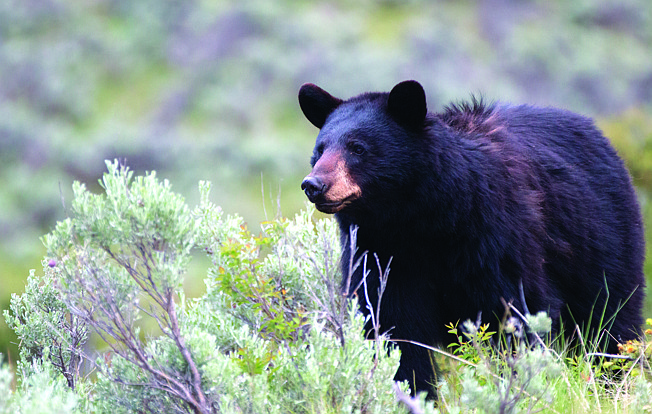AUSTIN - Since April, there has been an uptick in black bear sightings in Bowie, Titus and Grayson counties in Northeast Texas. The bears are thought to originate from the neighboring states of Oklahoma and Arkansas, or possibly Louisiana, where resident bear populations are well established and expanding.
As the numbers of this iconic species grows, dispersing black bears find their way across state lines into Texas, signaling the possibility of its eventual permanent return to our landscape.
"It is inspiring as a biologist to watch these animals make their return to Northeast Texas after being absent for a century or more," said Texas Parks and Wildlife Department biologist, Penny Wilkerson.
More than 100 years ago, the black bear, a Texas native, roamed the Lone Star State. Experts said the development of their forest habitat and unregulated hunting led to their disappearance in the early 1900s.
The recovery of black bears in the three-state region has been ongoing for 30-50 years. Thanks to conservation efforts, the Louisiana black bear is no longer listed as a federally threatened species. Similarly, efforts in Oklahoma and Arkansas have increased and expanded bear populations by focusing on habitat conservation and species management.
Bears are secretive but curious and have an excellent sense of smell, with much of their behavior driven by their appetite. These natural characteristics can, however, become a problem when bears find an easy meal from a human-related source. Most sighting reports come from game camera photos around game feeders dispensing corn or pelleted feed.
"Bears do not generally pose a threat to pets or livestock," Wilkerson said. "These critters are omnivores and are more interested in berries, grubs and acorns than anything else."
A little more than 10 years ago, 60 landowners, wildlife enthusiasts and public officials met in Clarksville, Texas, to hear researchers discuss the return of the black bear to the East Texas region and to celebrate the 10-year anniversary of the federal State Wildlife Grants program.
"What we're doing with those funds in Texas is to primarily focus on doing work with nongame-threatened, endangered plant and animal species. In Northeast Texas, we're focusing on black bear research and survey work," said Nathan Garner, East Texas Parks and Wildlife Department's director of wildlife operations, at the time.
The numbers of bears was rising then.
"Bears are slowly returning naturally to East Texas, primarily from Oklahoma, Arkansas and Louisiana. These are wild, free-roaming black bears that are moving naturally from areas they were born and raised in the three surrounding states," Garner said. "Just north of Red River County, we're seeing a rise in bear activity in recent years, and we think those bears are crossing the Red River.
Texas hunters should make sure they know their targets as hogs and bears can look very similar from a distance. Black bears are a protected species in Texas
TPWD is interested in documenting all sightings of bears and encourages reporting any sightings to a local biologist. Biologists can provide technical help on how to detour bears, and other unique animal visitors, from areas near your home. Residents can find a local biologist and more information about bears and bear safety on the TPWD website, tpsd.texas.gov. Residents are also encouraged to call the east Texas Region Office at 903-566-1626 Ext. 209.
(This story was supplemented by information pulled from the Texarkana Gazette archives.)


